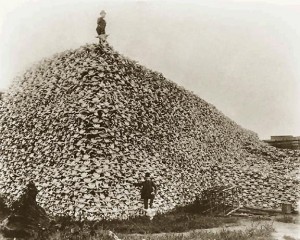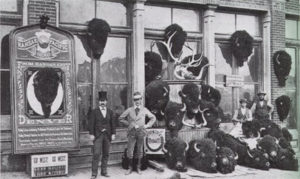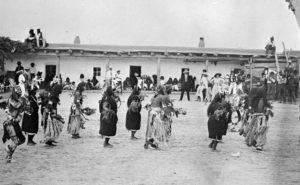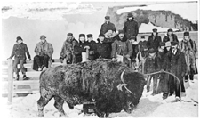Like many peoples dependent upon agriculture and hunting, Native Americans could face scarcity and deprivation if crops were poor or hunting was bad. If tribes had a regional primary food source, such as corn in parts of the Southwest or buffalo on the Plains, anything that tipped the balance against them had enormous ramifications. Losing good land hurt tribes dependent upon agriculture, and over-hunting hurt others more dependent on meat for winter survival. Many times, the intrusion of white settlers tipped the balance against Native American food security.
Native Americans on the Plains used almost every part of the buffalo, and its meat was critically important for survival. Originally, buffalo seemed to be limitless in number–some scientists estimate they may have numbered as high as 30 million before European settlers came to the continent–but several factors served to drive them to near extinction.:
–Native Americans were able to kill many more buffalo than they previously could, once they acquired horses and guns.
–Buffalo were forced to compete with horses and cattle, while ranchers killed many buffalo to clear land for cattle.
–Railroads required cleared land for trains, and workers killed many buffalo for food.
–Some buffalo were deliberately killed out of spite or as a policy to decimate the Plains’ best food source.
–Hunters and sport shooters slaughtered buffalo for the thrill of downing these enormous animals.
By the late 1990s, there were only two thousand or so buffalo left.

Last Buffalo Killed in N. Dakota (Jan 1907), courtesy Library of Congress Fred Hulstrand and F.A. Pazandak Photograph Collections

Pile of Buffalo Skulls To Be Ground Into Fertilizer, circa 1870s, courtesy Burton Historical Collection, Detroit Public Library
______________________________________________________________________________________
—


